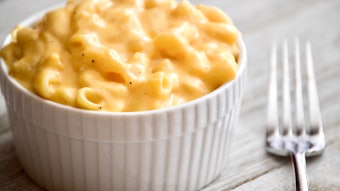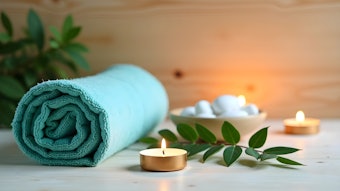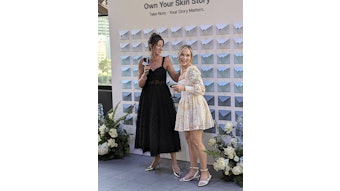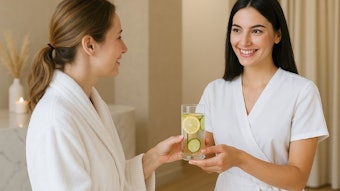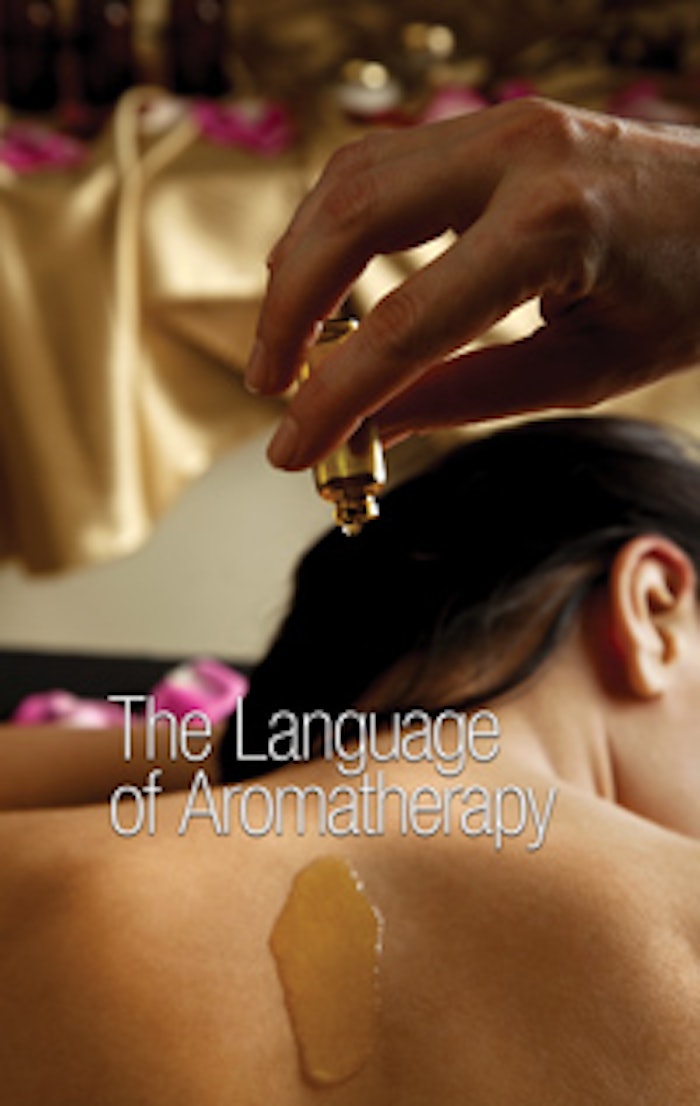
Aromatherapy is an artful practice and skillful science. Mastering it takes an intuitive nature and an expert ability to manipulate the chemistry of essential oils for a therapeutic purpose. Aromatherapy’s potential in esthetics, medicine and emotional health is tremendous, and even though aromatherapy has become popularized in spa and consumer products, it remains a somewhat elusive and ill-defined system of health and wellness. Most who work with essential oils know the challenges this presents when introducing aromatherapy services and products to clients.
Misguided and misinformed
Many people are confused by or completely misunderstand what aromatherapy really is. Marketing, media and product advertising has sold everything from synthetic scented candles to laundry detergent as aromatherapy. To top this off, the Internet is loaded with conflicting, amateur and just flat-out wrong information regarding essential oils and aromatherapy.
When you present a relaxing aromatherapy service to your clients, are you aware of their expectations and do you know what you are selling? What is aromatherapy doing to enhance your spa treatments?
The science of therapeutic aromatherapy
Aromatherapy is the art, skill and science of using essentials oils from plants, fruits, woods and flowers for the therapeutic benefit of the body, mind and spirit. This is the common, yet simple and incomplete definition. However, essential oils—or, more accurately, their chemical components—are the basis of many pharmaceutical drugs. The oils have been scientifically documented for wound-healing, as antiviral and antibacterial agents, in anti-cancer research and in many other medical applications. It doesn’t matter whether the medicinal properties are known or whether a medical application is suitable for esthetics, the essential oils will provide their therapeutic healing activity when used, depending on application method and dose.
Essential oil therapy can be a unique and useful tool when taking a holistic whole-body approach to skin care. Stress, digestion and liver imbalance, UV radiation, environmental stress, inflammation, compromised immunity and poor circulation all factor in to damaged, aging and irritated skin conditions. Essential oils have shown effectiveness in providing protection from these factors, as well as treating or supporting positive systemic functions, making them useful in application for skin conditions.
If you are presenting aromatherapy as a serious treatment option, consider taking classes that offer a higher educational standard to add credibility and acquire the expertise to make the most of your aromatherapy treatments and products. It is also necessary to obtain proficiency and comprehension in the selection of essential oils and aromatherapy products that are of the quality and chemical composition for therapeutic use.
Essential oils on the menu
When using essential oils for pharmaceutical-like applications, look to your state licensing board to find out how your use is governed. There are state laws that do not allow for prescribing or treating medical conditions without the proper credentials and licensing. (Author’s note: See this document from the American Academy of Dermatology’s website for more information on this topic: www.aad.org/gov/state/_doc/StateLawsChartTruthandTransparencyofProfessional Descriptions.pdf). The U.S. Food and Drug Administration (FDA) regulates the health claims of retail products. The Natural Products Foundation provides guidance to how you may present health claims of your essential oil products: naturalproductsfoundation.org/index.php?src=gendocs&ref=DSHEA_Quiz&category=FoundationPrograms.
Your spa menu does not need to include any language that may propose a medical aspect to your aromatherapy treatments, and you should not prescribe essential oils for diseased or medical conditions. Stay within the familiar language of a spa, using such words as “rejuvenate,” “protect” and “detoxify.”
Fight or flight. Here’s an example of what you can do with an essential oil using valid scientific research. The fight-or-flight stress response can factor in to many inflammatory conditions and some digestive issues, as well as heart palpitations. Cedarwood essential oil is documented for its affect on autonomic nervous function, with one study concluding that when cedarwood—or, more specifically its sesquiterpene alcohol compound cedrol—was inhaled it “induced an increase in parasympathetic activity and a reduction in sympathetic activity.”1 Cedarwood is easily included into skin care formulas; it is inexpensive, is an excellent skin conditioner, adds a balanced, woody fragrance, and may reduce physiological conditions that coincide with the fight-or-flight response and the skin sensitivity, acne and inflammation that may accompany it. Cedarwood essential oil provides relief for clients’ inner tension that may be affecting outward sensitivity and inflammation.
Anti-aging. The cell-regenerative properties of essential oils are one of aromatherapy’s skin care highlights. Essential oil of helichrysum and rosemary chemotype verbenone have been used successfully in combination with the fixed oil of rosehip seeds to help reduce scarring, wrinkles and fine lines. Other oils that are used for these anti-aging effects are frankincense, patchouli and carrot seed. Frankincense, sandalwood and the Brazilian copaiba oil not only support healthy skin, but also have documented results in preventing and reversing UV damage and melanoma.2–5
The use of positive language
Olfaction is a mysterious sense that can be manipulated through suggestion, allowing spa professionals to guide clients using positive or directive language. Without diminishing the scientific validity of essential oils, you can stay within familiar vocabulary when presenting an essential oil treatment or product. If you want clients to feel at ease, use comforting vernacular such as “soothing” and “relaxing,” or describe the odor using a visual interpretation. For example, while clients inhale a scent reminiscent of tropical bliss, suggest they imagine lying on a Hawaiian beach with the steady pulse of waves gently crashing on the shore. Doesn’t this imply released muscle tension, a calmed nervous system and rest?
Words that heal
Some very interesting and extreme healing can be accomplished through suggestion and positive verbal direction. This can be compared to a psychosomatic response, only with very real healing results thanks to the chemical properties of essential oils.
Some suggestive language signifying a treatment or product result can include: “This will help relieve your headache and neck tightness,” “These oils soothe sensitivity and calm the nervous conditions of the skin,” and “The oils help to purify and cleanse the skin, but also reduce the inner tension and stress that create inflammation, a direct cause of breakouts.” This language, combined with the affects of the correct essential oils, can help clients realize the outcomes they desire from your spa services.
REFERENCES
1. K Umeno, E Hori, M Tsubota, H Shojaku, T Miwa, Y Nagashima, Y Yada, T Suzuki, T Ono and H Nishijo, Effects of direct cedrol inhalation into the lower airway on autonomic nervous activity in totally laryngectomized subjects, Br J of Clin Pharmacol 65 2 188–96 (Feb 2008)
2. W Zhao, F Entschladen, H Liu, B Niggemann, Q Fang, KS Zaenker, and R Han, Boswellic acid acetate induces differentiation and apoptosis in highly metastatic melanoma and fibrosarcoma cells, Cancer Detect Prev 27 1 67–75 (2003)
3. M Kaur, C Agarwal, RP Singh, X Guan, C Dwivedi and R Agarwal, Skin cancer chemopreventive agent, {alpha}-santalol, induces apoptotic death of human epidermoid carcinoma A431 cells via caspase activation together with dissipation of mitochondrial membrane potential and cytochrome c release, Carcinogenesis 26 2 369–80 (Feb 2005)
4. SR Lima, VF Junior, HB Christo, AC Pinto and PD Fernandes, In vivo and in vitro studies on the anticancer activity of Copaifera multijuga Hayne and its fractions, Phytother Res 17 9 1048–53 (2003)
5. K Schnaubelt, J Harrison, Melanoma and Photoaging: Botanical Suppression of UV Damage, Proceedings of the 7th Scientific Wholistic Aromatherapy Conference, Pacific Institute of Aromatherapy, 173–202, Terra Linda Scent and Image, San Rafael, CA (2009)
To learn more about providing the perfect aromatherapeutic escape for your clients from Lydia Sarfati, log on to www.SkinInc.com/escape.
Jimm Harrison has more than 25 years of practice as a licensed cosmetologist, is a former salon owner, master aromatherapist and botanical product development manager. He has written numerous articles on the subjects of holistic beauty and cosmetic safety.




